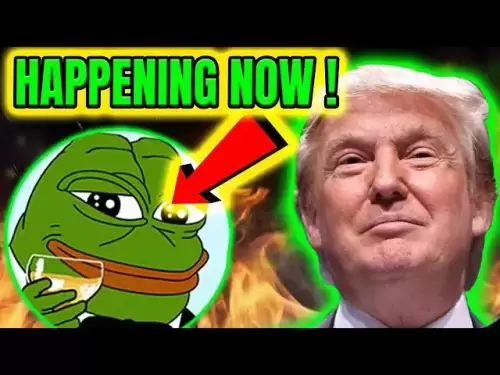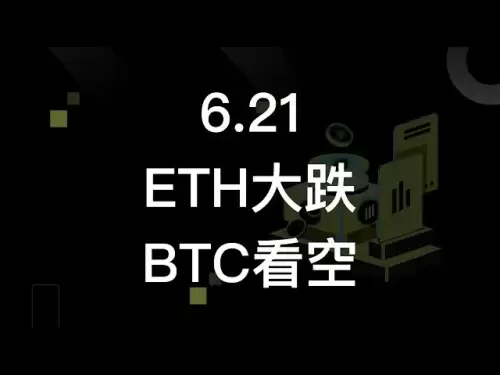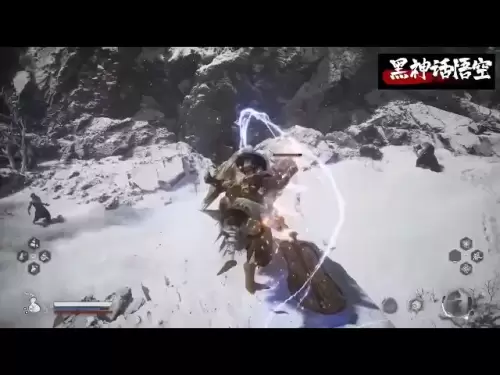-
 Bitcoin
Bitcoin $106,754.6083
1.33% -
 Ethereum
Ethereum $2,625.8249
3.80% -
 Tether USDt
Tether USDt $1.0001
-0.03% -
 XRP
XRP $2.1891
1.67% -
 BNB
BNB $654.5220
0.66% -
 Solana
Solana $156.9428
7.28% -
 USDC
USDC $0.9998
0.00% -
 Dogecoin
Dogecoin $0.1780
1.14% -
 TRON
TRON $0.2706
-0.16% -
 Cardano
Cardano $0.6470
2.77% -
 Hyperliquid
Hyperliquid $44.6467
10.24% -
 Sui
Sui $3.1128
3.86% -
 Bitcoin Cash
Bitcoin Cash $455.7646
3.00% -
 Chainlink
Chainlink $13.6858
4.08% -
 UNUS SED LEO
UNUS SED LEO $9.2682
0.21% -
 Avalanche
Avalanche $19.7433
3.79% -
 Stellar
Stellar $0.2616
1.64% -
 Toncoin
Toncoin $3.0222
2.19% -
 Shiba Inu
Shiba Inu $0.0...01220
1.49% -
 Hedera
Hedera $0.1580
2.75% -
 Litecoin
Litecoin $87.4964
2.29% -
 Polkadot
Polkadot $3.8958
3.05% -
 Ethena USDe
Ethena USDe $1.0000
-0.04% -
 Monero
Monero $317.2263
0.26% -
 Bitget Token
Bitget Token $4.5985
1.68% -
 Dai
Dai $0.9999
0.00% -
 Pepe
Pepe $0.0...01140
2.44% -
 Uniswap
Uniswap $7.6065
5.29% -
 Pi
Pi $0.6042
-2.00% -
 Aave
Aave $289.6343
6.02%
How to evaluate the value of NFT projects? Analysis from six dimensions
A credible NFT project combines transparent team backgrounds, real utility, active community engagement, and strong technical foundations to build long-term value.
Jun 21, 2025 at 02:28 pm
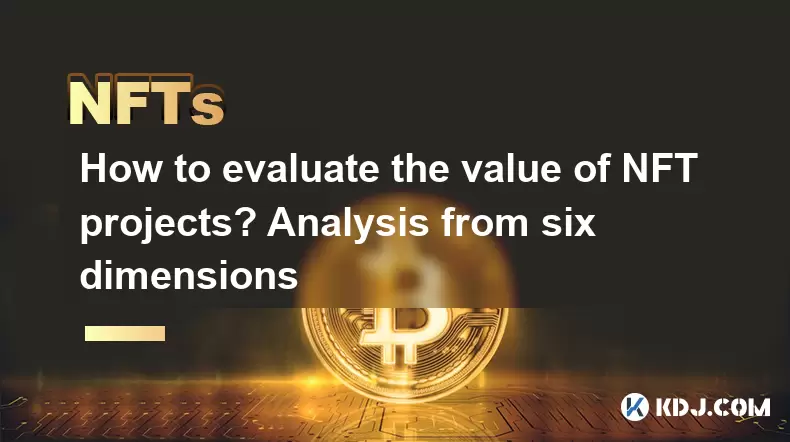
1. Project Background and Team Credibility
Evaluating the value of NFT projects begins with a thorough understanding of its background and team composition. A credible project is usually backed by experienced developers, designers, and marketers who have a proven track record in blockchain or digital art industries. The presence of identifiable team members on professional networks like LinkedIn or GitHub adds to the trust factor.
The project's whitepaper or roadmap should clearly outline its goals, timelines, and long-term vision. Transparency in communication, such as regular updates through blogs, social media, or community forums, is also a strong indicator of legitimacy. Projects that hide their team identities or lack clear documentation often raise red flags for potential investors.
2. Utility and Functionality of the NFTs
Beyond aesthetics or collectibility, the utility of an NFT plays a crucial role in determining its value. Some NFTs offer real-world benefits, such as access to exclusive events, membership privileges, or integration into gaming ecosystems. For instance, certain NFTs grant users special powers or assets within decentralized games (GameFi), increasing their desirability and usage.
It's important to assess whether the NFT serves a purpose beyond speculation. If the token can be staked, used for governance, or traded across platforms, it typically holds more intrinsic value. Projects that integrate with DeFi protocols or provide yield-generating mechanisms tend to attract more sustained interest from users and investors alike.
3. Community Engagement and Social Presence
A vibrant and active community is a key sign of a valuable NFT project. Platforms like Discord, Twitter, Telegram, and Reddit are commonly used by NFT communities to discuss developments, share content, and organize events. High engagement levels — including frequent discussions, user-generated content, and event participation — suggest strong grassroots support.
The size and growth rate of the community can be quantified using analytics tools or platform-specific metrics. However, quality matters more than quantity. Genuine interactions and meaningful contributions indicate a loyal and invested user base, which significantly enhances the project’s long-term viability.
4. Rarity and Scarcity Factors
Scarcity directly influences the perceived value of NFTs. Collectors often look at attributes like total supply, uniqueness of traits, and distribution patterns when evaluating NFTs. Tools like rarity calculators help assess how rare a particular NFT is within a collection, based on specific characteristics or traits.
Projects that enforce limited editions or time-bound minting phases create artificial scarcity, which can drive demand. However, this must be balanced with fair distribution practices to avoid accusations of manipulation or insider advantage. Transparent minting processes and verifiable ownership records enhance trust in the rarity claims made by the project.
5. Market Performance and Trading Volume
Analyzing historical data and current market trends is essential when evaluating NFT projects. Key indicators include floor price, average sale price, trading volume, and sales velocity. Platforms like OpenSea, Rarity.tools, and DappRadar provide comprehensive statistics that help gauge market sentiment.
The floor price, or the lowest-priced NFT in a collection, gives a quick snapshot of entry-level investment requirements. Rising trading volumes and consistent price appreciation over time indicate growing interest and confidence in the project. Conversely, stagnant or declining metrics may signal waning enthusiasm or underlying issues.
6. Technical Infrastructure and Security Measures
The technical foundation of an NFT project is often overlooked but critically important. This includes the blockchain network it operates on (e.g., Ethereum, Solana, Polygon), smart contract audits, gas efficiency, and interoperability with other platforms.
Smart contracts that have undergone third-party audits by reputable firms like CertiK or Hacken are more likely to be secure and trustworthy. Additionally, the use of decentralized storage solutions like IPFS or Filecoin ensures that NFT metadata remains accessible and tamper-proof over time.
Security vulnerabilities or poor coding practices can lead to rug pulls or exploits, causing irreversible losses. Therefore, investors should verify the technical robustness of a project before committing funds.
Frequently Asked Questions (FAQ)
Q: Can I evaluate an NFT project without checking its team?
While it's technically possible to assess some aspects of an NFT project without knowing the team, doing so increases risk. Anonymous teams may lack accountability, making it harder to verify intentions or capabilities. Trustworthy projects usually provide transparent information about their creators and contributors.
Q: How do I determine if an NFT has real utility?
Real utility is demonstrated through tangible use cases beyond simple ownership. Look for features like play-to-earn mechanics, voting rights, staking rewards, or cross-platform compatibility. If the NFT unlocks exclusive experiences or financial incentives, it likely offers genuine utility.
Q: Is high trading volume always a good sign?
Not necessarily. While high volume can indicate popularity, it could also result from wash trading or short-term hype. Cross-checking volume data with other metrics like floor price trends and unique wallet activity provides a clearer picture of authenticity and sustainability.
Q: What tools can I use to analyze NFT rarity?
Several online tools assist in evaluating NFT rarity, including Rarity.tools, Rarity.tools Pro, and CryptoSlam. These platforms break down individual NFT traits and rank them against others in the same collection, helping collectors make informed decisions based on statistical rarity scores.
Disclaimer:info@kdj.com
The information provided is not trading advice. kdj.com does not assume any responsibility for any investments made based on the information provided in this article. Cryptocurrencies are highly volatile and it is highly recommended that you invest with caution after thorough research!
If you believe that the content used on this website infringes your copyright, please contact us immediately (info@kdj.com) and we will delete it promptly.
- BNB Price Eyes $730 Target After ATH Rally Attempt
- 2025-06-21 16:25:12
- XRP Price: Market Breakout Imminent? Analyzing the Predictions
- 2025-06-21 16:25:12
- Shiba Inu, Cryptocurrency, and Investment: Beyond the Hype
- 2025-06-21 16:30:11
- AI Token Showdown: Can Ruvi AI Outpace Cardano to $1?
- 2025-06-21 16:45:11
- AI Token Race: Can Ruvi AI Outpace Cardano to the $1 Target?
- 2025-06-21 16:45:11
- Brand Ownership Redefined: Alki David's Crypto Revolution
- 2025-06-21 17:05:12
Related knowledge
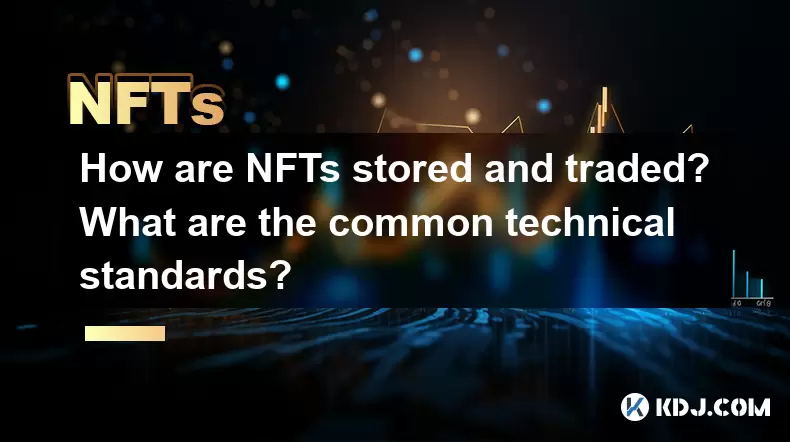
How are NFTs stored and traded? What are the common technical standards?
Jun 20,2025 at 08:49am
Understanding NFT Storage MechanismsNon-Fungible Tokens (NFTs) are digital assets that represent ownership of a unique item or piece of content, such as art, music, videos, or virtual real estate. The way NFTs are stored is crucial to their security and accessibility. Most NFTs are built on blockchain platforms like Ethereum, and the actual file—such as...

How to evaluate the value of NFT projects? Analysis from six dimensions
Jun 21,2025 at 02:28pm
1. Project Background and Team CredibilityEvaluating the value of NFT projects begins with a thorough understanding of its background and team composition. A credible project is usually backed by experienced developers, designers, and marketers who have a proven track record in blockchain or digital art industries. The presence of identifiable team memb...

What is the difference between NFT and digital collectibles? A must-read guide for beginners
Jun 19,2025 at 09:42pm
Understanding the Basics of NFTsNFTs, or Non-Fungible Tokens, are unique digital assets that represent ownership of a specific item or piece of content on the blockchain. Unlike cryptocurrencies such as Bitcoin or Ethereum, which are fungible and can be exchanged one-for-one, each NFT has distinct properties and cannot be directly replaced by another to...
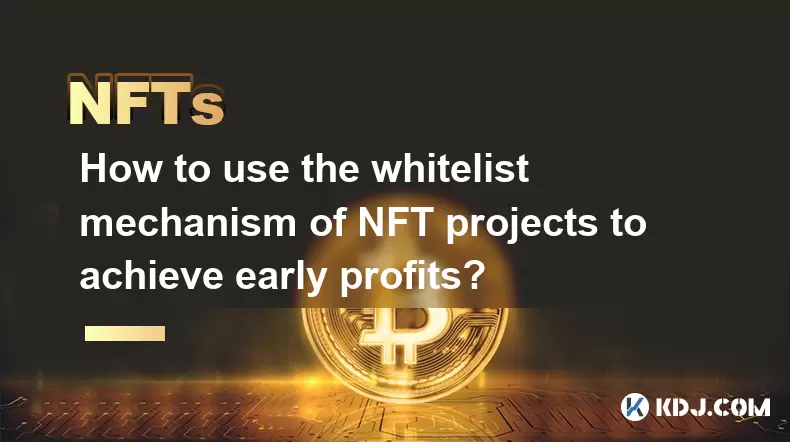
How to use the whitelist mechanism of NFT projects to achieve early profits?
Jun 21,2025 at 03:49am
Understanding the Whitelist Mechanism in NFT ProjectsThe whitelist mechanism is a popular strategy used by NFT project developers to allocate early access or exclusive minting rights to a select group of users. This system allows participants on the whitelist to mint NFTs before they are released to the general public, often at lower prices and with few...
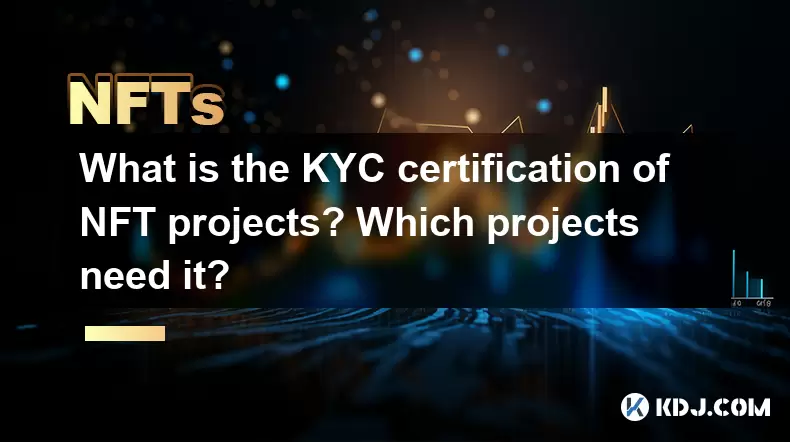
What is the KYC certification of NFT projects? Which projects need it?
Jun 21,2025 at 03:08pm
Understanding KYC Certification in the NFT SpaceKYC, or Know Your Customer, is a regulatory process used by businesses to verify the identity of their clients. In the context of NFT projects, KYC certification refers to the verification of user identities before they can participate in minting, trading, or selling NFTs on a platform. This practice is in...
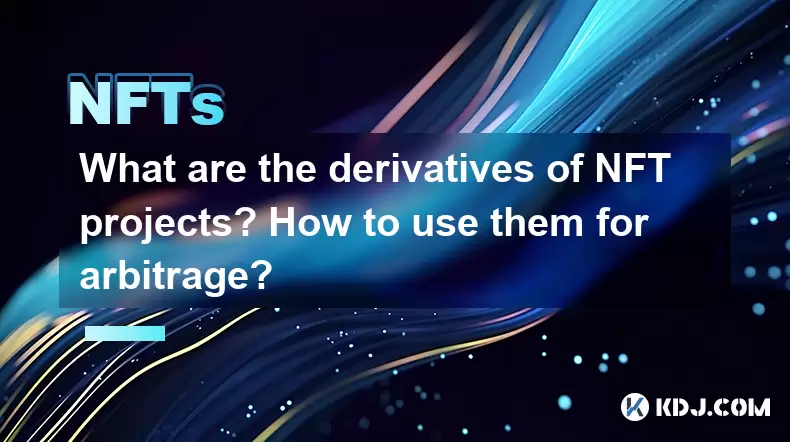
What are the derivatives of NFT projects? How to use them for arbitrage?
Jun 20,2025 at 06:14am
Understanding the Derivatives of NFT ProjectsNFTs, or non-fungible tokens, have evolved beyond simple digital collectibles. In recent years, derivatives of NFT projects have emerged as a new financial layer within the blockchain ecosystem. These derivatives are essentially financial instruments derived from the value and performance of underlying NFT as...

How are NFTs stored and traded? What are the common technical standards?
Jun 20,2025 at 08:49am
Understanding NFT Storage MechanismsNon-Fungible Tokens (NFTs) are digital assets that represent ownership of a unique item or piece of content, such as art, music, videos, or virtual real estate. The way NFTs are stored is crucial to their security and accessibility. Most NFTs are built on blockchain platforms like Ethereum, and the actual file—such as...

How to evaluate the value of NFT projects? Analysis from six dimensions
Jun 21,2025 at 02:28pm
1. Project Background and Team CredibilityEvaluating the value of NFT projects begins with a thorough understanding of its background and team composition. A credible project is usually backed by experienced developers, designers, and marketers who have a proven track record in blockchain or digital art industries. The presence of identifiable team memb...

What is the difference between NFT and digital collectibles? A must-read guide for beginners
Jun 19,2025 at 09:42pm
Understanding the Basics of NFTsNFTs, or Non-Fungible Tokens, are unique digital assets that represent ownership of a specific item or piece of content on the blockchain. Unlike cryptocurrencies such as Bitcoin or Ethereum, which are fungible and can be exchanged one-for-one, each NFT has distinct properties and cannot be directly replaced by another to...

How to use the whitelist mechanism of NFT projects to achieve early profits?
Jun 21,2025 at 03:49am
Understanding the Whitelist Mechanism in NFT ProjectsThe whitelist mechanism is a popular strategy used by NFT project developers to allocate early access or exclusive minting rights to a select group of users. This system allows participants on the whitelist to mint NFTs before they are released to the general public, often at lower prices and with few...

What is the KYC certification of NFT projects? Which projects need it?
Jun 21,2025 at 03:08pm
Understanding KYC Certification in the NFT SpaceKYC, or Know Your Customer, is a regulatory process used by businesses to verify the identity of their clients. In the context of NFT projects, KYC certification refers to the verification of user identities before they can participate in minting, trading, or selling NFTs on a platform. This practice is in...

What are the derivatives of NFT projects? How to use them for arbitrage?
Jun 20,2025 at 06:14am
Understanding the Derivatives of NFT ProjectsNFTs, or non-fungible tokens, have evolved beyond simple digital collectibles. In recent years, derivatives of NFT projects have emerged as a new financial layer within the blockchain ecosystem. These derivatives are essentially financial instruments derived from the value and performance of underlying NFT as...
See all articles





















